Politics
Violet Overn’s Chilling Fraternity House Photos Bring Sexual Assault Victims Out of the Darkness
The photographer depicts the uglier side of college life.
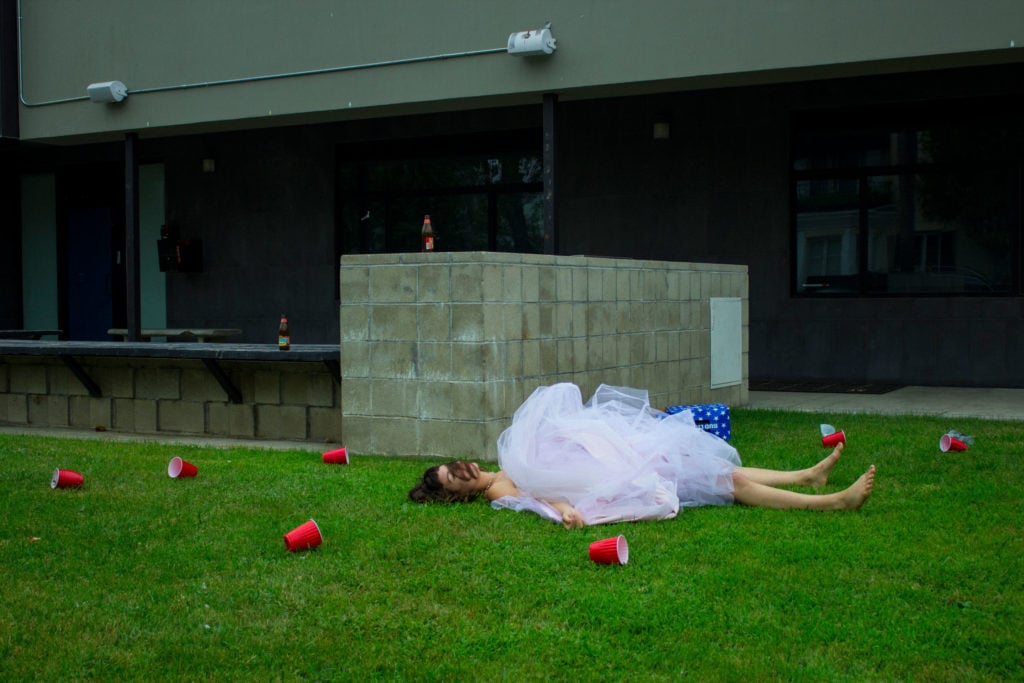
The photographer depicts the uglier side of college life.

Sarah Cascone

New York-based artist Violet Overn depicts the ugly side of college life in the photo series “Fraternity Houses,” posing as a woman passed out on the ground in front of a fraternity house amid the aftermath of a night of partying. In one image, a disheveled-looking woman is immediately visible amid discarded red Solo cups and makeshift beer pong tables. In another, she is passed out, face down, under a basketball hoop.
Claims of sexual assault are often difficult to prove, all-too-often a he-said-she-said affair, complicated by the effects of alcohol. As a result, much of the late-night campus party scene remains in the shadows.
The statistics of sexual assault on US college campuses are troubling. According to the National Sexual Violence Research Center, one in five women (and one in 16 men) are victims during their time in college. What’s more, over 90 percent of sexual assault survivors do not report it.
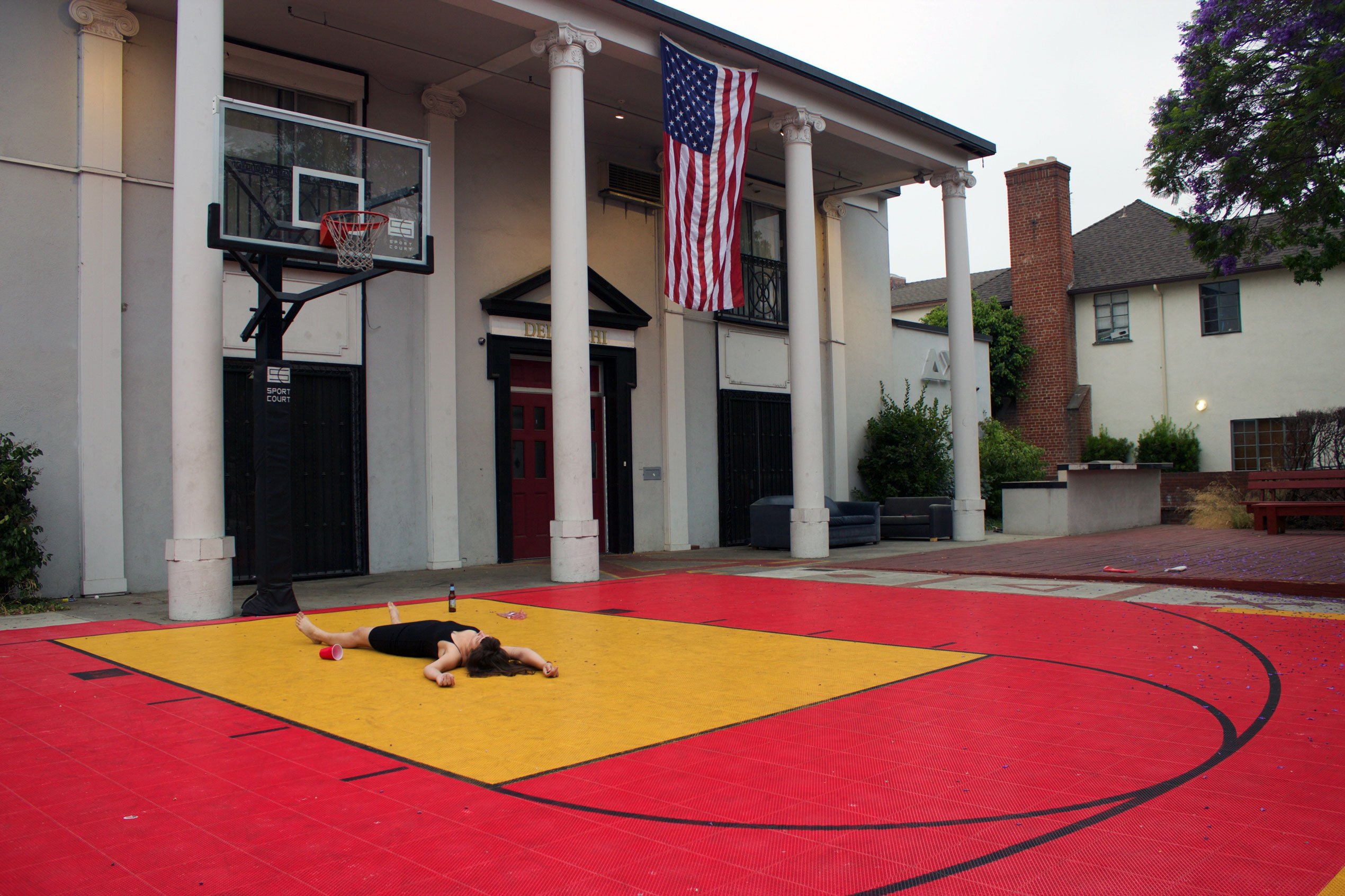
Violet Overn, from the “Fraternity Houses” series. Courtesy of Violet Overn.
Overn did not bring any props with her on her early morning photo shoot, relying instead on the litter that was already scattered about fraternity lawns on the University of Southern California campus. (A recent NYU graduate, Overn told artnet News in a phone conversation that she had “stopped by” a USC frat party once several years ago, but that the work isn’t specifically targeting the school, but is “more about the institution [of fraternities] in general.”)
The series, which is reminiscent of crime scene photography, was inspired in part by the case of Stanford University student Brock Turner, who received a six-month prison term after being convicted on three counts of sexual assault. He was released after just three months, based on good behavior. “He was treated very mildly and given the benefit of the doubt,” said Overn, who plans to add more photos to the series. “It really upset me the way he was represented.”
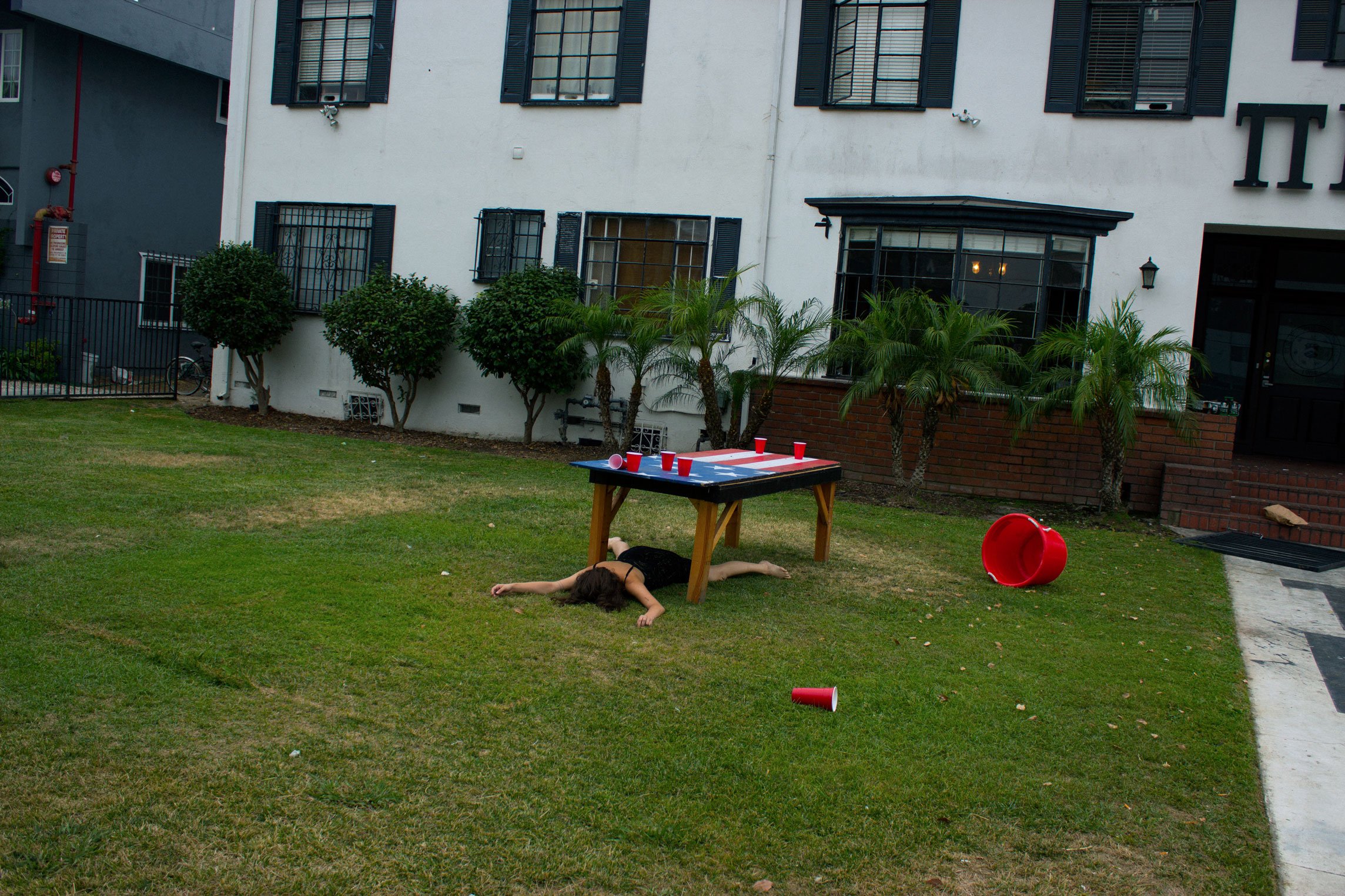
Violet Overn, from the “Fraternity Houses” series. Courtesy of Violet Overn.
By obscuring her face, Overn suggests that her subject could be any woman—a chilling thought, given the statistics. “I didn’t want it to be about me,” she explained. “My body is supposed to be the symbol of the female body, rather than it being a self portrait.”
Her pose, lying flat on the ground is also deliberate, and helps send a powerful message of the need for social change on college campuses. It “does symbolize a woman who’s been hurt or is vulnerable,” said Overn. “It’s also the pose of a non-violent protest or a sit-in.”
See more photos from the series below.
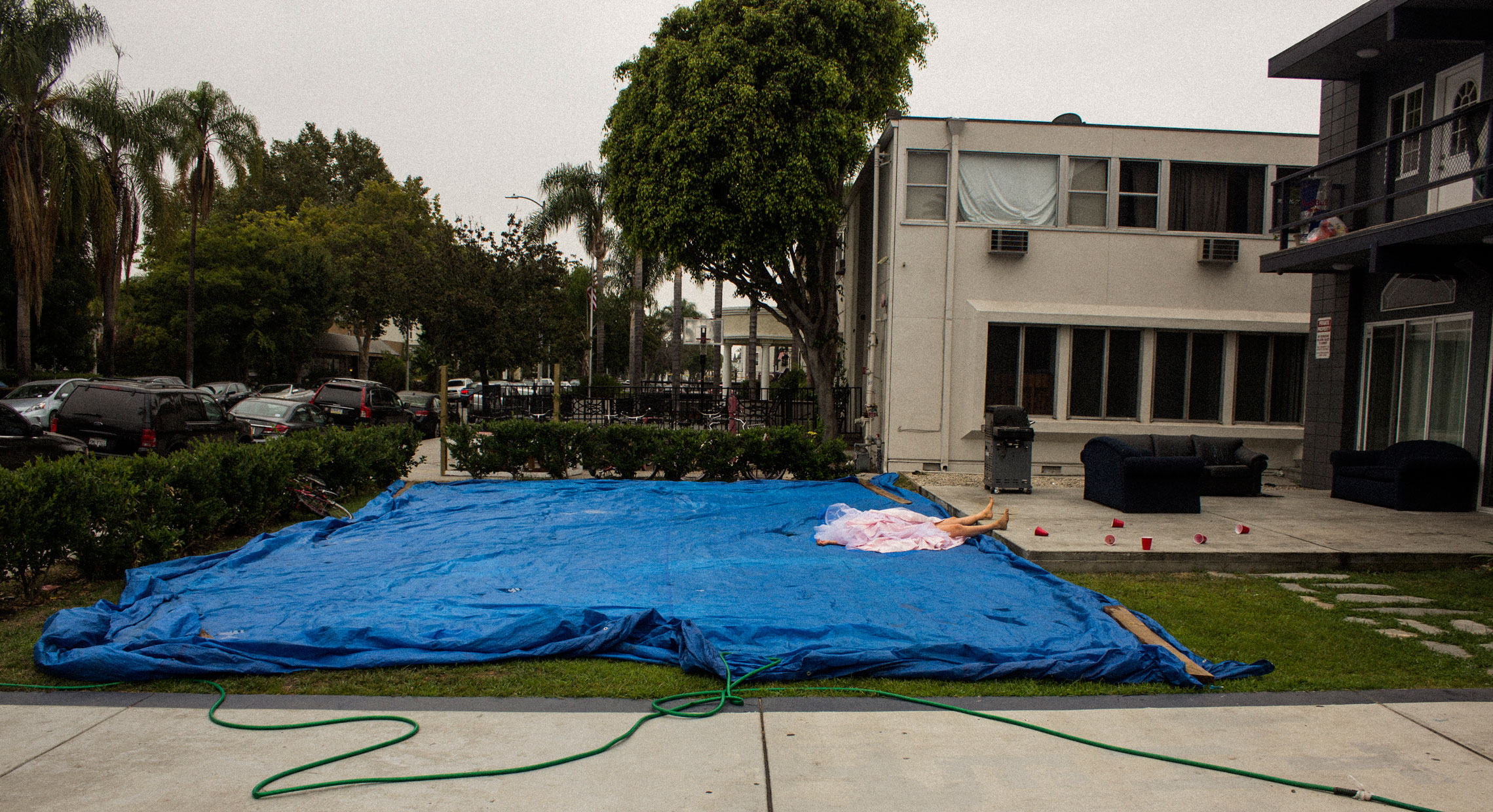
Violet Overn, from the “Fraternity Houses” series. Courtesy of Violet Overn.
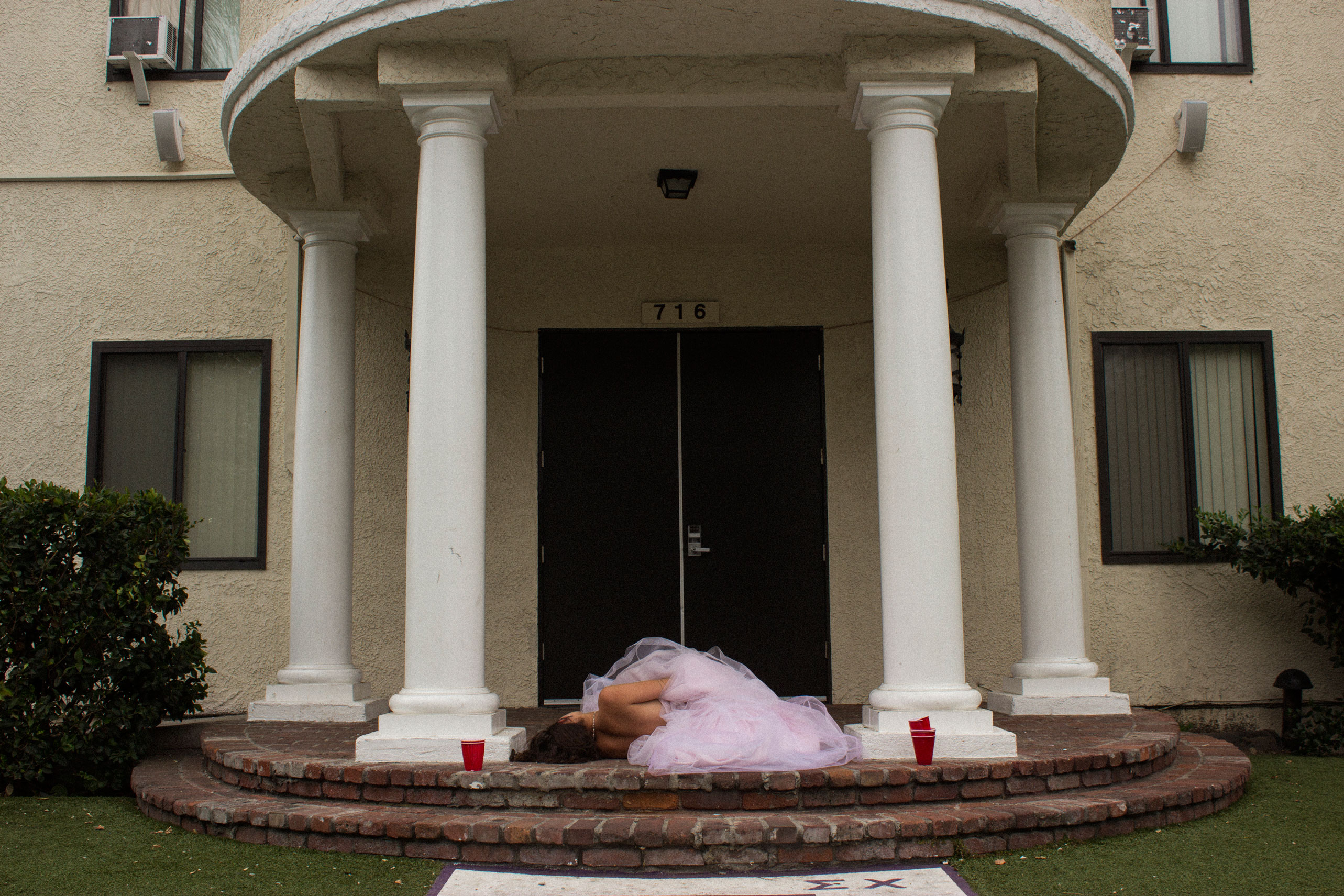
Violet Overn, from the “Fraternity Houses” series. Courtesy of Violet Overn.